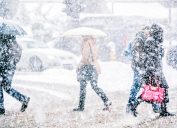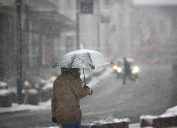Polar Vortex Could Bring "Severe Winter Weather" to the U.S.—Here's When
The polar vortex has already been acting "squirrely," experts say.
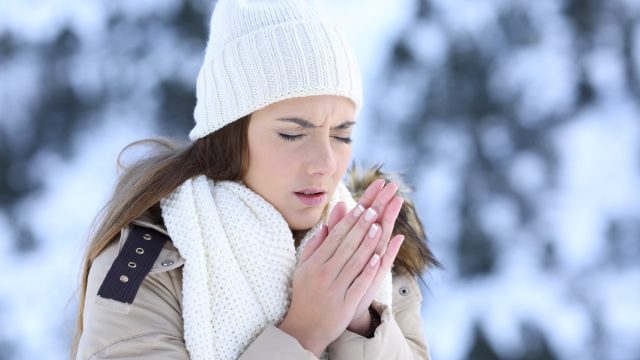
This January has delivered some wacky weather, with storms and fluctuating temperatures leaving us guessing with the forecast each week. Following a freezing arctic blast, much of the U.S. is soon getting a bit of a reprieve with warmer days ahead. But we're in for yet another rude awakening thanks to some activity with the polar vortex, which could potentially introduce "severe winter weather." Read on to find out when temperatures might plummet again.
RELATED: Flash Flood Warnings This Week as 6+ Inches of Rain Predicted in These Regions.
What is the "polar vortex"?

According to the National Weather Service (NWS), the polar vortex "is a large area of low pressure and cold air surrounding both of the Earth's poles." The "vortex" refers to the counter-clockwise flow of air that keeps the colder air near the poles, but during the winter, the vortex can be disrupted and send cold air into the Northern Hemisphere, resulting in "large outbreaks of Arctic air."
The NWS notes that not all cold weather comes from the polar vortex, and the wind pattern itself isn't a danger. However, we do need to know how far temperatures will drop when this happens, especially in areas that don't typically get that cold.
It's not uncommon for circumstances to weaken the vortex, also distorting the jet stream and leading to a cold air outbreak. But now, experts say there's been some unusual activity with the stratospheric polar vortex.
RELATED: Weather Predictions Keep Changing—What the Unpredictable Shifts Mean for You.
There was a minor disruption of the polar vortex.

In a blog post on Climate.gov, experts explained that there was a minor disruption of the stratospheric polar vortex that slowed the spin. It wasn't major enough to change the direction the vortex was spinning in (from counter-clockwise to clockwise), but there was an unusual disruption on the lower levels of the stratosphere. This could have contributed to the cold air that hit the U.S. last week.
"It appears as though the minor [vortex] warming during the first week of January and the subsequent destruction of the polar vortex in the lower stratosphere were enough to at least help set the stage for the cold air outbreak over North America this past weekend," Climate.gov wrote.
But moving forward, this disruption of the lower levels of the stratosphere could eventually lead to a disturbance of the winds above it, and consequently bring more frigid air to the U.S.
RELATED: How New "Extreme" Thunderstorms and Wind Are Increasing—And Affecting Where You Live.
Effects on the weather aren't going to be immediate.
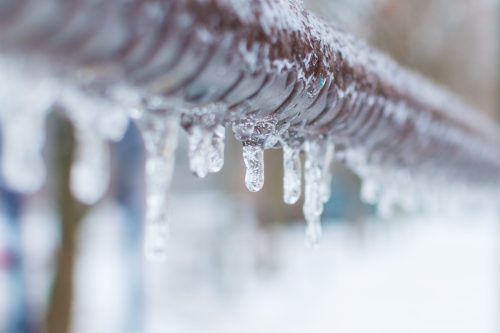
According to the Climate.gov blog post, we'll have to wait and see exactly how the disruption will impact us over the next few weeks.
A collapse of the polar vortex takes time—and it wouldn't immediately affect the weather here in the U.S., The Washington Post reports. On the flip side, experts at Climate.gov note in the blog post that the breakdown of the vortex itself is expected to be brief, and it will then "cease its shenanigans and strengthen gain back to its normal speed."
As Brad Pugh, a forecaster at the National Oceanic and Atmospheric Administration (NOAA) Climate Prediction Center, told WaPo, "the [disruption] is expected to be short lived (a couple of days) and winds [in the vortex] will strengthen again toward the end of January."
We may see shifting weather patterns next month.
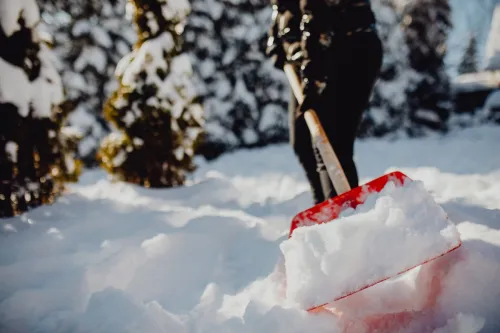
We do know that milder temperatures are in store for the next week or so, followed by a cloudier forecast, per WaPo.
However, Climate.gov says there's a "slightly higher" risk of more cold air outbreaks—and if we're going to see more wintry weather as a result of the polar vortex, it's likely to settle in next month.
As Judah Cohen, atmospheric scientist and specialist in long-range weather forecasts at Atmospheric and Environmental Research, told WaPo, if the vortex ends up stretching out, "we get episodes of more severe winter weather" in February. If it does end up staying "strong and circular," then next month will stay mild.
Climate.gov also notes that while the polar vortex could help foster another cold spell, other variables are at play. The ongoing El Niño can affect a cold air outbreak, as does the location of the jet stream in winter. The blog post notes that the jet stream can nudge itself, as opposed to being strictly moved by "climate processes in the tropics or the stratosphere."
RELATED: For more up-to-date information, sign up for our daily newsletter.



